Ireland will welcome New Zealand to Dublin this weekend as the two-time defending champions return to the Irish capital for the first time since 2016.
Ireland toppled New Zealand to seal their first ever win over the All Blacks in Chicago two years ago before Steve Hansen’s side came to Dublin two weeks later to rectify the loss in a highly physical match at the Aviva Stadium.
The game was a cracker but both teams have since moved on. Malakai Fekitoa, Julian Savea, Aaron Cruden, Simon Zebo, Donnacha Ryan and Paddy Jackson have all left their respective unions to continue their careers in France. Jamie Heaslip, Andrew Trimble and Jared Payne have retired from the game while the likes of Conor Murray, Robbie Henshaw and Sam Cane will miss out this weekend through injury.
The teams have changed but 15 of the 23 New Zealand players that were in Dublin for the 21-9 win will once again line up for the All Blacks on Saturday.
A very questionable Beauden Barrett try and a moment of magic from TJ Perenara and Fekitoa ultimately cost Ireland two years ago but here we look back at some of the areas Ireland enjoyed great success against the Kiwis.
Just off the ruck
The fourth and fifth defender was an area that The 1014 Rugby channel identified as a potential weakness in the All Blacks defence last week and it’s an area where Ireland enjoyed some good success in Dublin last time out.
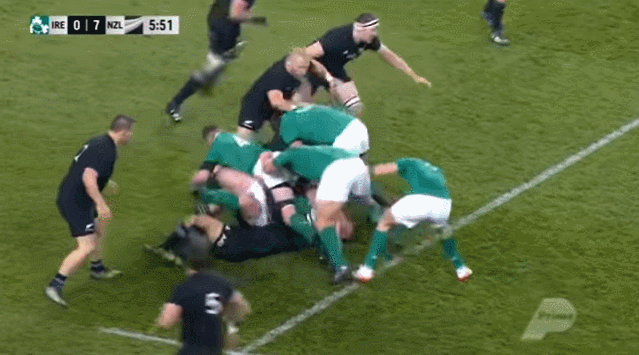
Former Ireland number eight Jamie Heaslip had a phenomenal game against New Zealand in Dublin and early in the first half he found some daylight near the fourth and fifth defender as he wriggled his way between two props before offloading the ball to Sean O’Brien who was hauled down just metres before the line after a brilliant tackle by Beauden Barrett.
Late in the second-half Josh van der Flier, who will now start on Saturday after Dan Leavy was pulled from the match with what the IRFU are describing as general tightness, also found some success a couple of defenders wide of the ruck.
The Leinster flanker found some space outside of All Blacks backrower Liam Squire and raced up field before eventually finding Heaslip who then passed the ball on to Sean Cronin for a massive Irish gain.
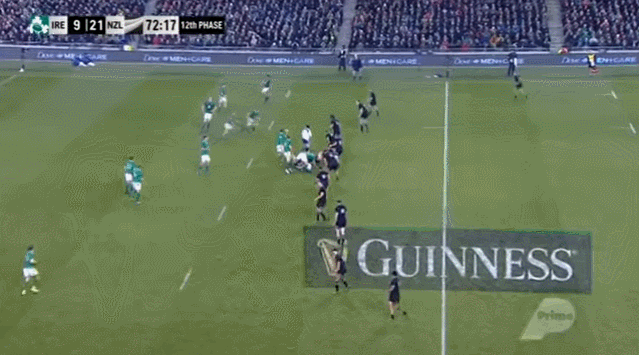
The Edge
The wide channel is also an area where Ireland enjoyed some good success against New Zealand.
It builds on some of the previous examples of targeting the area wide of the ruck and through a quick recycle and Conor Murray’s quick passing, Ireland were able to transfer the ball to the opposite side of the pitch in just two passes and make some good ground after Heaslip adjusted his line to run inside Liam Squire.
Granted, New Zealand had a man in the sin bin, and while Simon Zebo may have potentially squandered a 3-on-2 situation by passing early, it’s a great break by Heaslip and a good example of the spaces available if Ireland can get quick ball and move the ball wide.
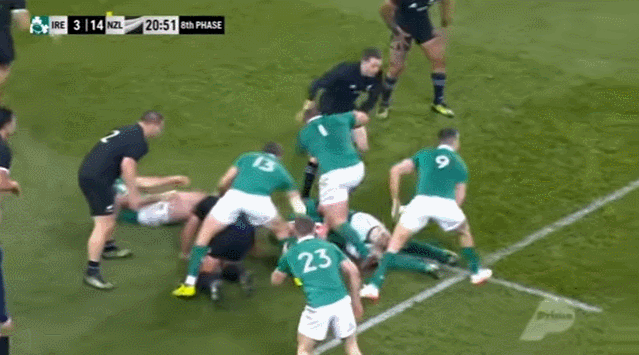
Again, below we can see Ireland get some good possession in the middle of the park and through strong ball carrying and a quick recycle at the breakdown, they’re on the front foot and making metres into the 22.
Heaslip again makes another strong carry and provides quick ball which Murray fires out to the edge where Paddy Jackson runs on at speed and again catches out Squire in defence.
The blindside makes the tackle but Ireland now have some good possession in the New Zealand 22 and are ready to attack.
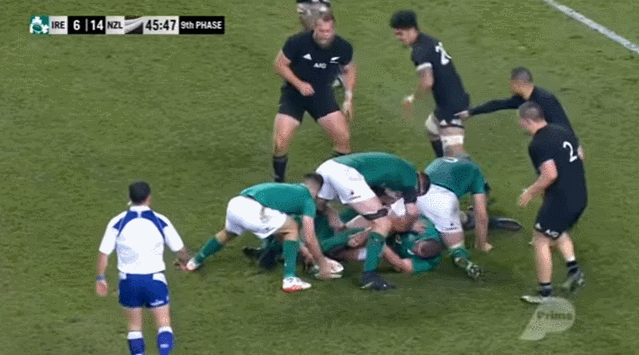
Former New Zealand captain and current Auckland Blues coach Tana Umaga identified the edge as a key area this weekend and a place on the rugby field where most modern rugby teams are trying to attack.
“Everyone is working off errors,” Umaga said last week ahead of the Guinness series.
“Trying to create pressure by being physical and swarming in their defence. As soon as that happens it’s structure from the unstructured.
“There is certain structure and the individual gets to express themselves – like a Beauden Barrett, a Ben Smith, Rieko Ioane – when they get that ball in space that’s when we’re looking for a one-on-one opportunities with someone that is isolated, hopefully a tight forward, that you’re looking for standing in the wrong place and then we can see those cues straight away and go to that space.
“You’re trying to take advantage of that unstructured before they get structured. With the Irish, and with the All Blacks, every team is trying to get structured as soon as we can but then it’s just a race.”
The Line-out
Strong line-out play has been one of the hallmarks of New Zealand under Steve Hansen and lock Brodie Retallick terrorised the English line-out at Twickenham last weekend.
Whitelock, Retallick and captain Kieran Read are some of the best line-out operators in world rugby and to combat their effectiveness here, Ireland head coach Joe Schmidt has brought 6’10 Devin Toner back into the starting side for this weekend.
Toner trails James Ryan, Tadhg Beirne and Iain Henderson by some distance in terms of mobility but he’s excellent in the line-out and from the restart.
With Ireland struggling here against Argnetina last weekend, Toner’s inclusion is extremely valuable and the Meath man made a big difference in the Irish line the last time New Zealand visited.
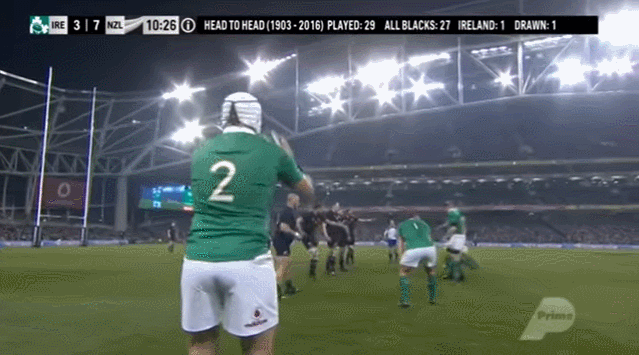
Here we can see Toner calmly walk into the Irish line-out and jump straight into the air before Retallick has a chance to spoil the hosts ball.
It’s a great lift and throw but Toner’s height here is a huge advantage and it provides Ireland clean ball from which they can attack.
Again, later in the game we can see Ireland opt for a short line-out and Toner once again is able to get above Whitelock and secure clean line-out ball for his side.
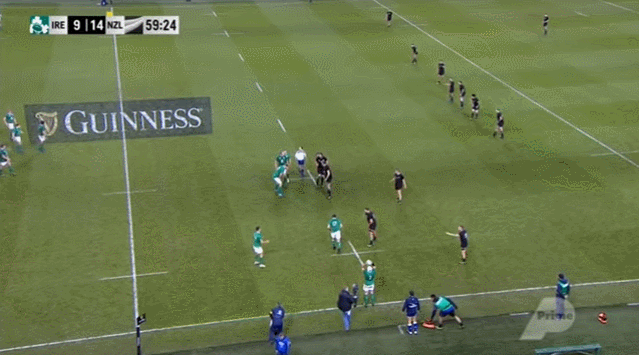
He drops it down in one fluid motion to Conor Murray who fires the ball to Sean O’Brien and now Ireland are in a good position to attack with solid possession and a great platform in the New Zealand half.
Some of these aspects may seem rudimentary and quite obvious. You should enjoy an advantage in the line-out if you pick a 6’10 lock. You will be able to exploit most teams on the edge if you can get strong carries through the middle and quick ball at the ruck.
But against New Zealand, where margins are often thin and opportunities are often hard to come by, these are some good examples of areas that Ireland may be able to exploit against a team they have beaten just once before in 113 years of competitive rugby.
Needless to say, taking advantage of these areas is a lot easier said than done, but the holes are there and Joe Schmidt and Ireland will certainly have a great crack at trying to exploit them.

































